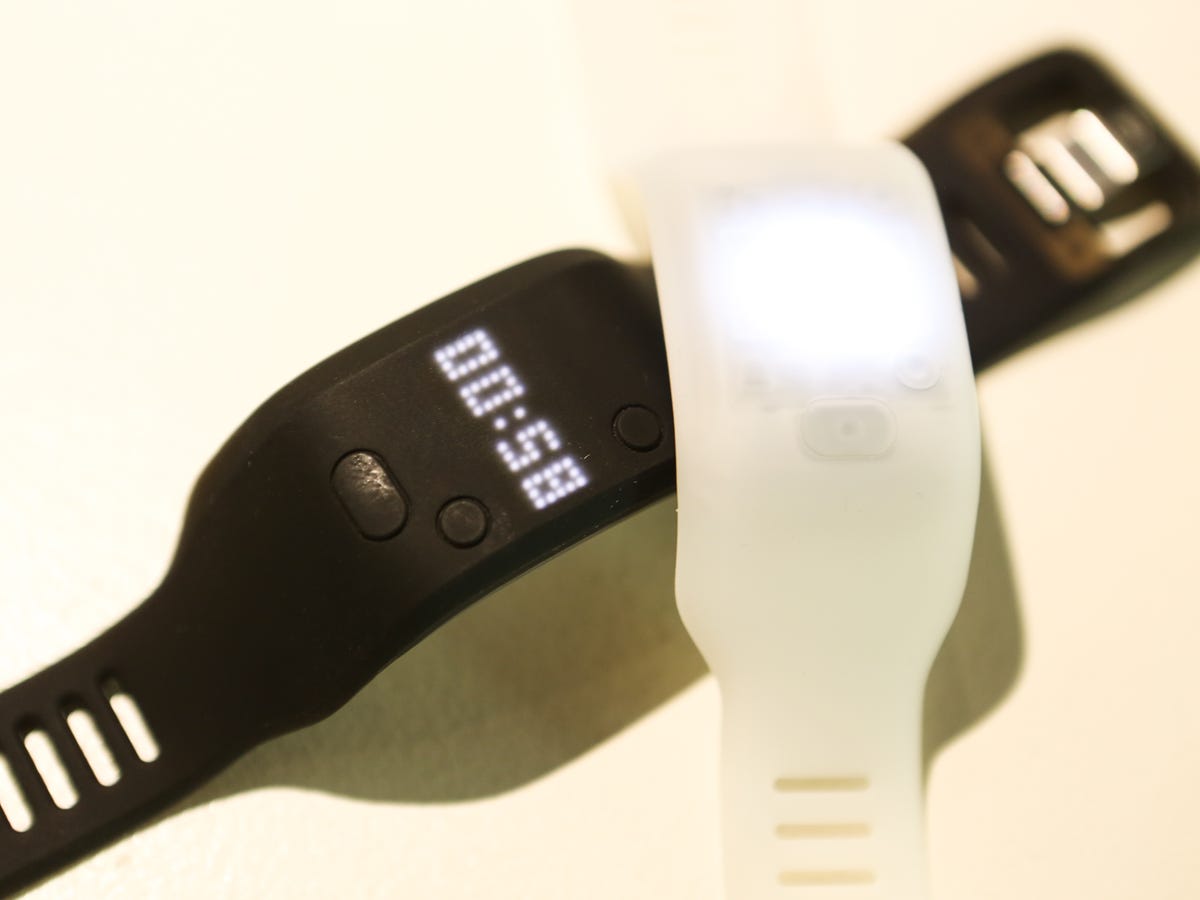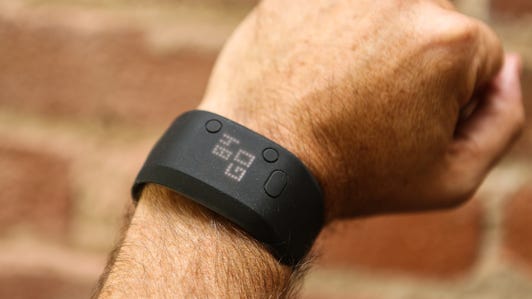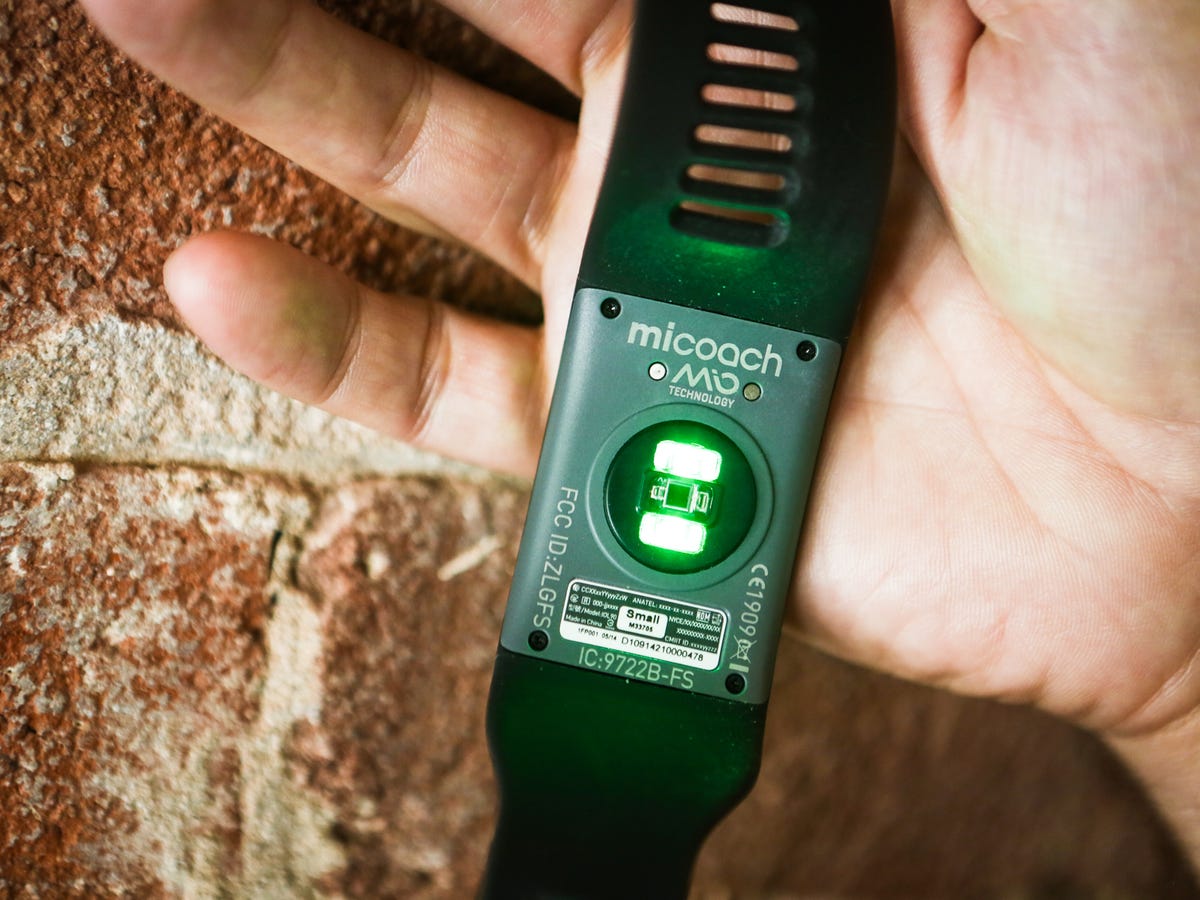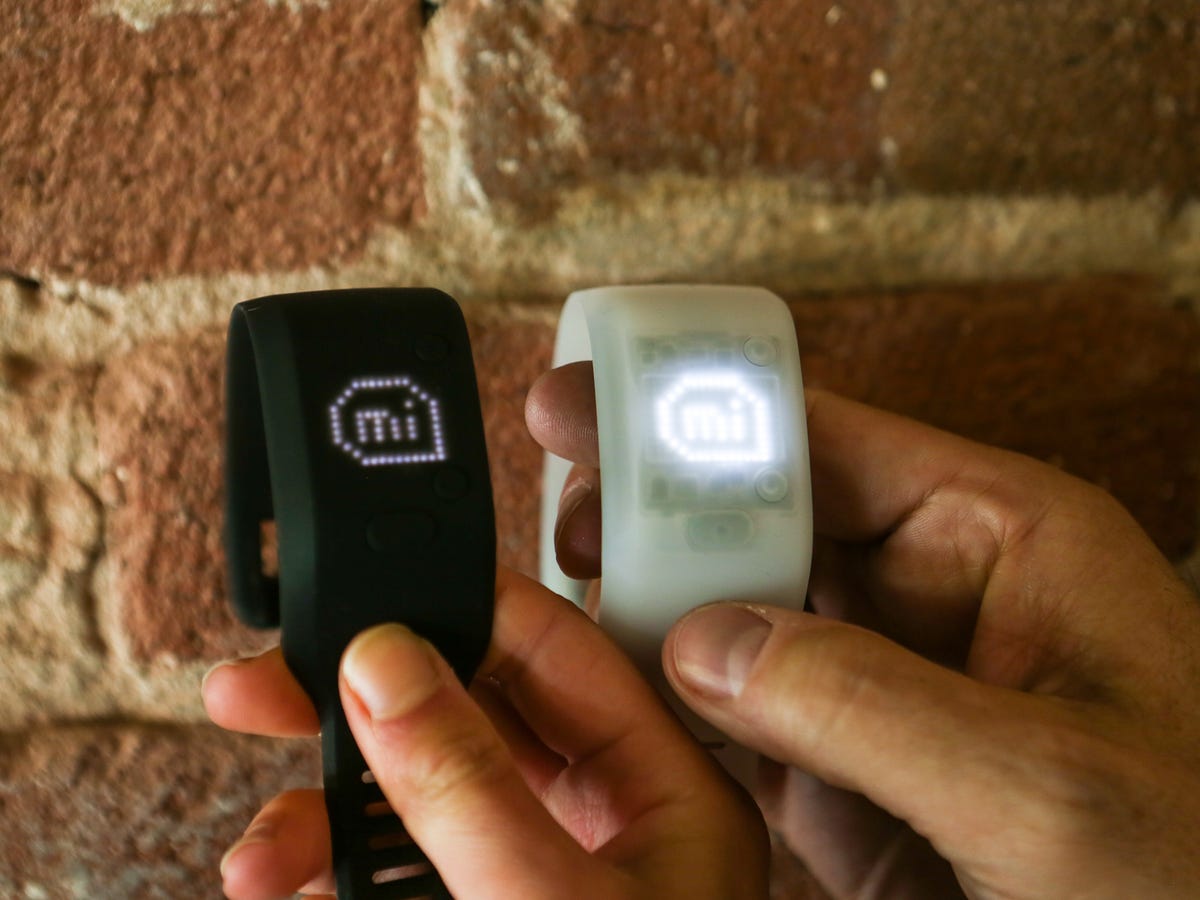
Josh Miller/CNET
Can a wearable device that doesn’t do everything and more — but does only one thing and does it well — survive in a sea of more powerful and stylish gadgets? Adidas wants to find out.
Wearable tech, essentially mini-computers and sensors we sport against our skin, is no longer restricted to those wrist-worn pedometers with zealous branding. The catchall phrase now refers to everything from sensor-laden T-shirts and head-mounted displays to Google-powered watches. The market is so complex, and the devices so feature-heavy and uncommunicative, that the technology’s promise has become more amorphous and hollow than it is ready to wear.
That’s why the German sportswear giant is hoping to stay in the game not by trying to keep pace, but by stripping itself down. The Fit Smart, Adidas’ new $199 activity tracker announced Wednesday as part of its MiCoach training platform, is a device similar in shape and size to the company’s $400 Smart Run watch released last year . Yet the Fit Smart eschews competing against modern wearables in favor of a practical purpose that can be more easily explained to consumers by what it doesn’t do rather than what it can.
Get fit with Adidas’ MiCoach Fit Smart (pictures)






It does not do all-day step counting. It is not meant to be worn while sleeping, or in the shower or the pool or the ocean. It does not play games or run apps. It is not powered by a next-gen operating system. It does not have a color, LCD touchscreen. In fact, it doesn’t have a traditional screen at all. It is neither a 24-hour lifestyle tracker nor a smartwatch.
It is a wristband covered head to toe in soft silicon with a heart rate monitor underneath, and it’s meant for workouts and action sports. That’s it.
“It became an exercise of omission. Knowing what to keep out is important,” said Paul Gaudio, general manager of digital sport at Adidas. “We needed to make it accessible from a price standpoint. It shouldn’t be over-featured. In fact, that would be a negative.”
The Fit Smart is not meant to be worn perpetually throughout the day. Its battery lasts only 10 hours on a single charge and is designed to be strapped to your wrist only when you work out or play sports. The key feature is a glowing band of LED light on the face of the device that uses the heart rate monitor, with various accompanying hues, from blue and green to yellow and red, to signal and inform you about workout intensity at a glance.


Josh Miller/CNET
“We understand that it needs to be able to track heart rate, and we need to turn that into meaningful coaching insights. That drove the need for vibration, and for a screen that at least could give you visual cues and prompts,” Gaudio added.
The Fit Smart can show you the time and display other metrics like the heart rate reading thanks to the LED light array that glows at different intensities, but the device’s feature set stops there. The wristband can be summed up in five simple steps: strap it on, get active, come back, take it off. Oh, and sync your data, though that can be done at any point you feel like with the MiCoach Train and Run app for iOS and Android. The idea that you need to lug this around all day long on your wrist — and for it to look like something you would sport out at a restaurant — was taken off the table early on.
“I don’t think that 24-hour tracking is completely there yet in terms of value,” Gaudio said. “This isn’t the lifestyle activity tracker. That simplifies the decision making.”
Adidas’ new wearable stands out particular for its refusal to give us the best and brightest and biggest of everything — processor, screen, operating system. It has what Gaudio called a “bespoke” quality, less for its physical materials and more for how Adidas wants you to view its usefulness.
As far as modern wearables go, it’s still unclear if the public needs — let alone wants — any of these devices, or if we prefer one particular form factor over another. Health and fitness have been the closest and best marketed use cases. Those devices do best as things we strap onto our shoes, as Nike did with Nike+iPod almost a decade ago, or wear on our wrist with the hope that it stays out of the way. Even then, we have either products that want to be worn every minute of every day, like Fitbit and Jawbone, or newer smartwatches that are basically paint thrown at the wall.
Samsung’s recently unveiled Gear Live, for instance, monitors your heart rate, plays games, displays time on swappable watch faces, feeds you emails and texts from your phone, offers Google Maps directions, and searches the Web when you ask it questions. You have to charge it once a day, just like the smartphone it relies on.


Josh Miller/CNET
While the Fit Smart gives consumers a message of simplicity and practicality, it’s unclear if consumers will pay $199 for something that doesn’t contain all the bells and whistles of the latest devices — all of which are targeting the same $200 to $300 price range equal to a top-shelf smartphone.
Wearable tech is not a market in which it’s easy to keep your head above water. Smartphones with improved sensing capabilities like the iPhone 5S’ M7 processor can now do a lot of the tracking that low-end fitness bands specialize in. It’s also becoming increasingly clear that Apple, with its purportedly forthcoming “iWatch” wearable, is taking a health and fitness focus. The iPhone maker included an app, Health Kit, in the next version of its mobile operating system due this fall. The fitness hub is expected to be the linchpin of Apple’s wearable. Microsoft is also expected to release a wristband wearable later this year.
It’s important, however, to look away from the tech giants and toward Adidas’ biggest rival in sportswear and fitness gear: Nike. The FuelBand earned the world’s largest sportswear company an innovation crown and an in-road into technology’s next frontier. But Nike earlier this year decided that its software platform, Nike+, was more valuable than sinking time, effort, and money into wearable hardware development. Nike fired a majority of its engineering team, shelved a future FuelBand product, and is now enveloped in rumors that it’s working with Apple on partnering up for the iWatch.
“It’s about playing a larger role in the lives of athletes and helping them get better. That’s what drives us and fuels our efforts and investments,” Gaudio said about staying in the wearable hardware space as it crowds, even while competitors like Nike have strategically moved on. “It’s not so much whether we make devices, hardware, software. If we require hardware and software to best provide that, we’ll develop it.”
It’s the same value that Nike once saw in getting to the market first with the FuelBand — and the reason that sportswear companies are getting involved with technology in the first place. Wearables build their brand, develop different and potentially deeper relationships with consumers, and give them a reason to build out and bundle services into a platform that links back to its core products: shoes and shirts and sports training equipment. For Adidas, the value is still there in staying on the field.
“It’s about our role, coming from sport,” Gaudio added. “I understand that the larger wearable space is also exploding and it’s very exciting. It’s relevant to us. It’s good for us. But it will always reinforce our position to stay core to sport.”



